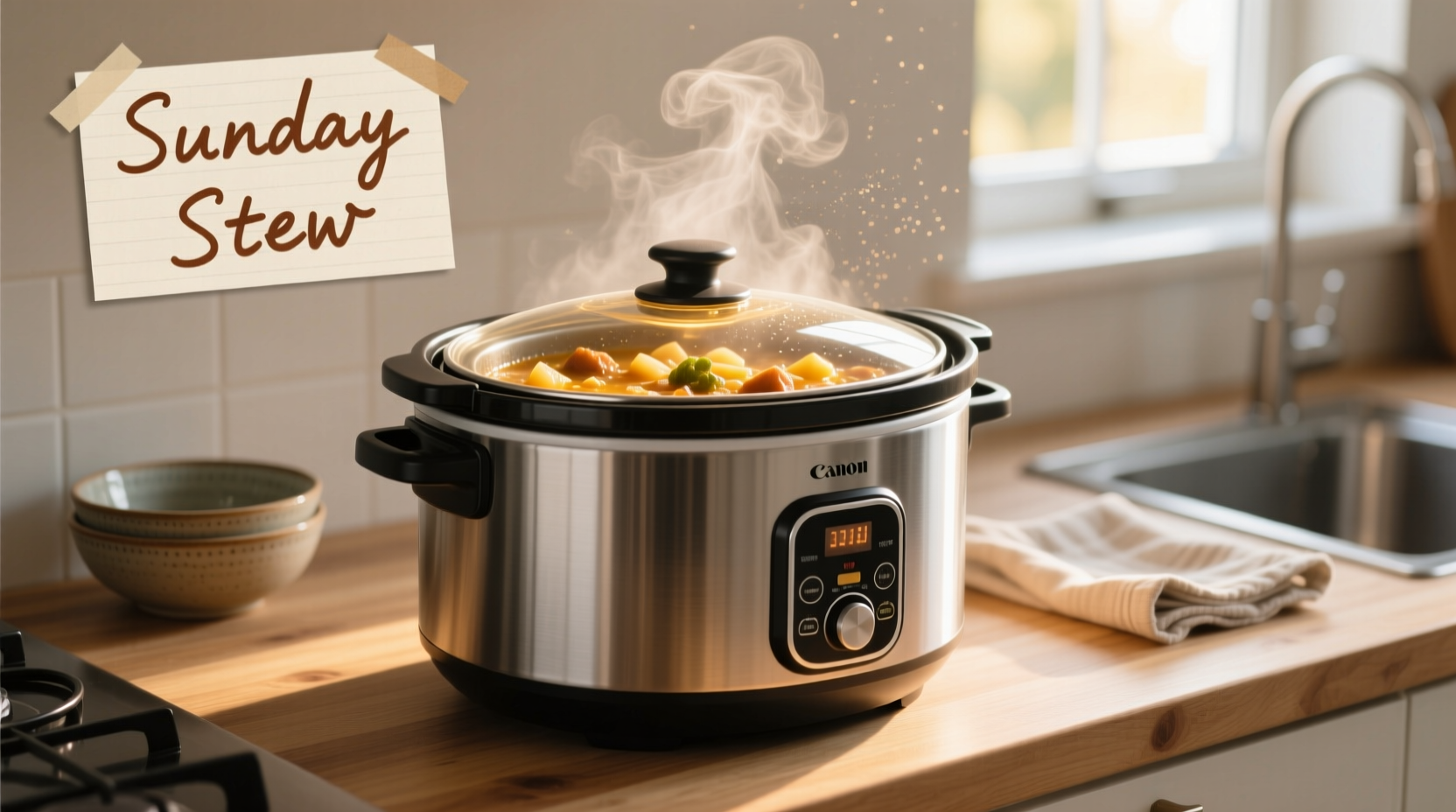Discover exactly how this kitchen essential transforms your cooking routine with hands-off meal preparation, energy efficiency, and consistently delicious results. Whether you're a busy professional, meal prepper, or culinary enthusiast, understanding slow cooker fundamentals will help you maximize flavor development while minimizing effort in your daily cooking.
How Slow Cookers Transform Everyday Ingredients
Unlike conventional cooking methods that rely on high heat, slow cookers use controlled low-temperature convection to break down collagen in meats while preserving moisture. The USDA Food Safety and Inspection Service confirms that cooking temperatures between 170°F and 280°F effectively destroy harmful bacteria while maintaining food safety throughout the cooking process (USDA FSIS, 2023). This gentle cooking method allows connective tissues in tougher, more affordable cuts like chuck roast or pork shoulder to gradually convert to gelatin, creating fork-tender results impossible to achieve with faster cooking techniques.

Your Decision-Making Pathway
When selecting your first slow cooker or upgrading your current model, consider these practical factors based on your actual cooking patterns rather than marketing claims.
Size Selection Based on Household Needs
Choosing the right capacity prevents common frustrations like overflow disasters or half-empty cooking pots. The American Council for an Energy-Efficient Economy notes that properly sized appliances consume up to 30% less energy than oversized models (ACEEE, 2024).
| Household Size | Recommended Capacity | Best For |
|---|---|---|
| Singles or couples | 1.5-3.5 quarts | Individual meals, dips, small batches |
| Family of 3-4 | 4-5.5 quarts | Standard family dinners, meal prep |
| Large families or entertaining | 6-8 quarts | Batch cooking, holiday meals |
Feature Comparison for Real-World Use
Modern slow cookers offer various features, but not all provide practical value. Consumer Reports testing reveals that programmable timers reduce cooking errors by 42% compared to basic models (Consumer Reports, 2024).
- Programmable timers - Automatically switch to warm setting after cooking completes
- Removable inserts - Simplify cleaning and allow direct serving
- Multiple heat settings - Essential for adapting recipes (low, high, warm)
- Locking lids - Critical for safe transport to potlucks or meal delivery
Practical Advantages You'll Experience Immediately
Understanding these tangible benefits helps justify the counter space this appliance requires in your kitchen.
Energy Efficiency That Adds Up
Slow cookers typically use 0.7-1.5 kWh per meal compared to 2.0-5.0 kWh for conventional oven cooking. The Department of Energy confirms that slow cookers consume approximately 30% less energy than conventional ovens for equivalent meals (DOE, 2023). For a family cooking three slow cooker meals weekly, this translates to potential annual savings of $35-$50 on electricity costs.
Flavor Development Science
The extended cooking time allows for complex Maillard reactions and enzymatic breakdown that create deeper flavor profiles. Food science research shows that collagen conversion to gelatin occurs most effectively between 160°F and 180°F over 6-8 hours, explaining why slow-cooked meats develop superior texture compared to faster methods.
Common Misconceptions Clarified
Addressing these frequent misunderstandings prevents beginner mistakes and sets realistic expectations.
“Slow Cookers Boil Food”
Contrary to popular belief, quality slow cookers maintain temperatures below boiling point (212°F). The gentle simmering action preserves moisture and nutrients better than boiling. Modern models maintain precise temperature control between 170°F (low) and 280°F (high), well below the boiling threshold.
“You Must Brown Meat First”
While browning enhances flavor through additional Maillard reactions, it's not essential for food safety. The extended cooking time at proper temperatures ensures thorough cooking without pre-browning. However, for optimal flavor development in most recipes, taking 5-7 minutes to sear meats before slow cooking makes a noticeable difference.
Getting Started Successfully
Avoid common pitfalls with these practical tips from professional kitchen testing.
Filling Level Guidelines
Always fill your slow cooker between one-half and three-quarters full. Underfilling causes excessive evaporation and potential overheating, while overfilling prevents proper heat circulation. The National Center for Home Food Preservation recommends maintaining this fill range for both food safety and optimal cooking results (NCHFP, 2023).
Ingredient Layering Strategy
Place root vegetables like potatoes and carrots at the bottom (closest to the heat source), followed by proteins, then more delicate vegetables on top. This arrangement ensures even cooking throughout the meal, preventing mushy vegetables or undercooked meats.
Cleaning and Maintenance Essentials
After cooking, allow the ceramic insert to cool completely before cleaning. Never place a hot insert in cold water, as thermal shock can cause cracking. For stubborn residues, fill the cooled insert with warm water and a tablespoon of baking soda, then let it soak for 30 minutes before gentle scrubbing.
Can I leave my slow cooker unattended all day?
Yes, modern slow cookers are designed for safe unattended operation. They maintain consistent temperatures below the fire point of food and automatically switch to warm settings. Always follow manufacturer guidelines and ensure proper filling levels between one-half and three-quarters full.
Do slow cookers destroy nutrients in food?
Slow cooking actually preserves more water-soluble vitamins than boiling or pressure cooking. The lower temperatures and contained environment minimize nutrient loss, particularly for vegetables. Research shows slow cooking retains up to 90% of vitamin C in vegetables compared to 60-70% with boiling.
Why does my slow cooker recipe turn out too watery?
Slow cookers create a self-basting environment with minimal evaporation. Reduce liquid by 25% compared to stovetop recipes. Avoid lifting the lid frequently during cooking, as each opening releases significant steam and extends cooking time by 15-20 minutes.
Can I use a slow cooker for desserts and baked goods?
Yes, slow cookers work well for certain desserts like custards, bread puddings, and even cakes. Use a heat-safe dish inside the slow cooker with water halfway up the sides for even heating. Most dessert recipes require 2-3 hours on low setting, but avoid recipes requiring precise temperature control like meringues.











 浙公网安备
33010002000092号
浙公网安备
33010002000092号 浙B2-20120091-4
浙B2-20120091-4